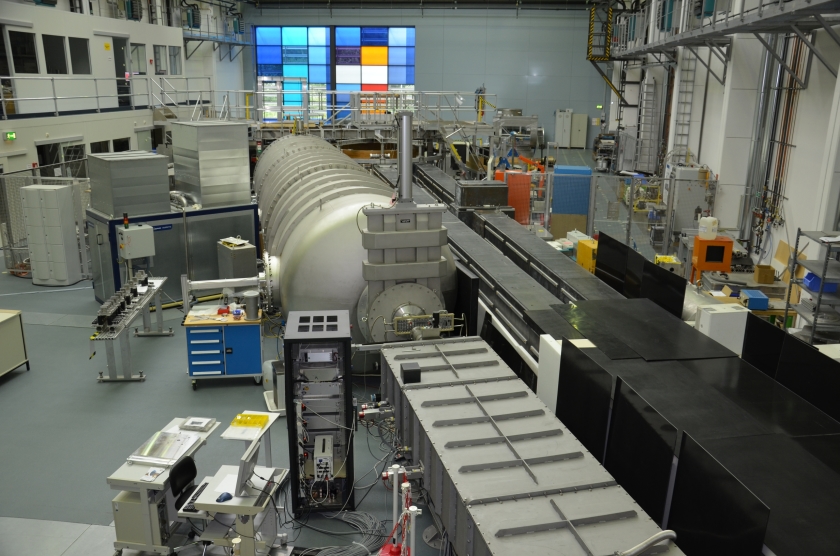Neutron instrument VSANS will move to Penn State University, USA

The VSANS instrument (here in the neutron hall at BER II) will move to Penn State University. © A. Kubatzki/HZB
At the end of 2019, the Berlin neutron source BER II was shut down as scheduled. To ensure that the high-quality instruments can continue to be used for research, they are moving to suitable neutron sources in Germany and abroad. Now, another move has been agreed upon: The Very Small Angle Scattering Instrument (VSANS) will find a new home at the Breazeale Research Reactor at Penn State University, USA, in spring 2022.
At Penn State University, the Radiation Science & Engineering Center (RSEC) operates the Breazeale reactor, which produces neutrons for research. An expansion is now planned there to accommodate the new, very large VSANS instrument.
VSANS stands for Very Small-Angle Neutron Scattering, i.e. the scattering of neutrons at very small scattering angles. This method enables insights into colloidal systems and soft matter, but also into glasses, biomimetic structural proteins, microemulsions, flexible electronics and many other questions, from physics to biology.
"Our goal is that our excellent instruments will continue to be available for research and innovation after BER II is shut down. We are therefore very pleased that the VSANS is being reinstalled at the Breazeale reactor", says Roland Steitz, HZB. This means that the HZB experts have now found a new location for almost all neutron instruments.
"The Breazeale reactor at the Penn State RSEC will be the only university research reactor with a SANS facility in the United States," says Kenan Ünlü, director of the RSEC and professor of nuclear engineering.
arö
https://www.helmholtz-berlin.de/pubbin/news_seite?nid=23155;sprache=en
- Copy link
-
Sodium-ion batteries: New storage mechanism for cathode materials
Li-ion and Na-ion batteries operate through a process called intercalation, where ions are stored and exchanged between two chemically different electrodes. In contrast, co-intercalation, a process in which both ions and solvent molecules are stored simultaneously, has traditionally been considered undesirable due to its tendency to cause rapid battery failure. Against this traditional view, an international research team led by Philipp Adelhelm has now demonstrated that co-intercalation can be a reversible and fast process for cathode materials in Na-ion batteries. The approach of jointly storing ions and solvents in cathode materials provides a new handle for the designing batteries with high efficiency and fast charging capabilities. The results are published in Nature Materials.
-
10 million euros in funding for UNITE – Startup Factory Berlin-Brandenburg
UNITE – Startup Factory Berlin-Brandenburg has been recognised by the Federal Ministry for Economic Affairs and Energy as one of ten nationwide flagship projects for science-based start-ups. UNITE is to be established as a central transfer platform for technology-driven spin-offs from science and industry in the capital region. The Helmholtz Centre Berlin will also benefit from this.
-
Almost 4,000 People at the Long Night of the Sciences at HZB
Helmholtz-Zentrum Berlin was delighted to welcome nearly 4,000 visitors to its Adlershof campus for the Long Night of the Sciences. It was a fantastic celebration of science, and we thank all our guests for their great interest.
